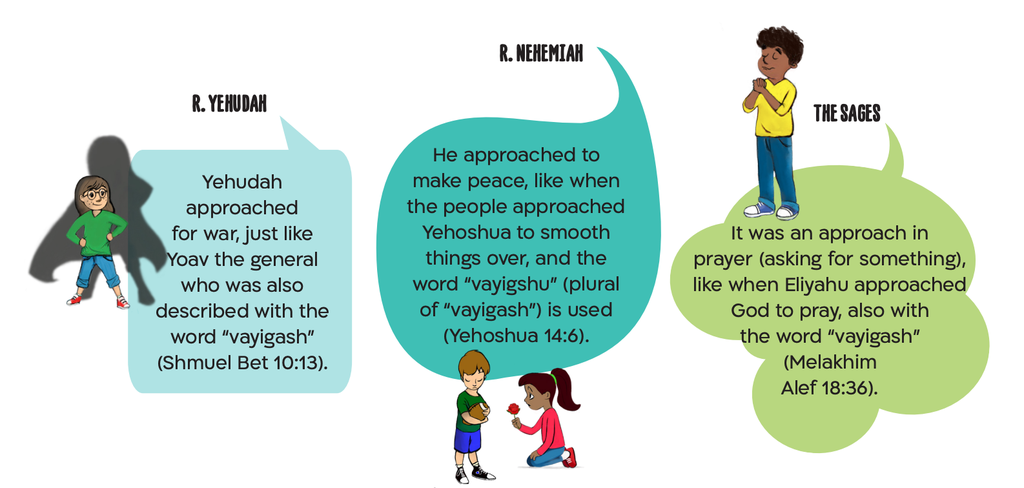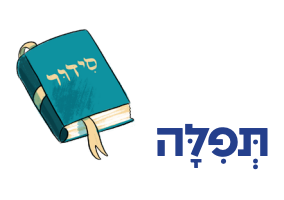
Prayer in the Parashah תְּפִלָּה
The Torah uses the word וַיִּגַּשׁ (vayigash, he approached) to describe Yehudah coming towards Yosef. What feelings was Yehudah experiencing and expressing when he made this approach? A midrash (Bereishit Rabbah 93) records a few opinions, based on other places that “vayigash” comes up in Tanakh.

R. Yehudah says he approached for war, just like Yoav the general who was also described with the word “vayigash” (Shmuel Bet 10:13).
R. Nehemiah says he approached to make peace, like when the people approached Yehoshua to smooth things over, and the word “vayigshu” (plural of “vayigash”) is used (Yehoshua 14:6).
The Sages say it was an approach in prayer (asking for something), like when Eliyahu approached God to pray, also with the word “vayigash” (Melakhim Alef 18:36).
It’s very important to realize that tefillah is about approaching God, which means both that we get to come close to God, and that the tefillah experience might be different based on the person who is approaching.
Like these different opinions in the midrash, when we come to pray we might be feeling any of these things at different times.

- What could it mean to “approach” God (especially if God does not have a body)? Is it possible for people to be “close” without being physically next to each other? How can they do that? What about tefillah is like being close to someone?
- Can you think of a time that you’ve approached another person, or approached God, in each of the three attitudes listed in the midrash above?
- In tefillah, which stance feels most natural to you? Which would take some practice? Are there different times, or different tefillot, when you’re more likely to feel one more than the other?
-------------------
-------------------





